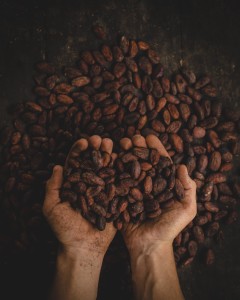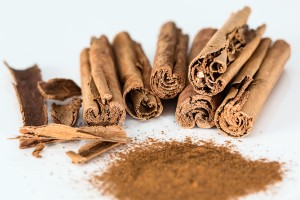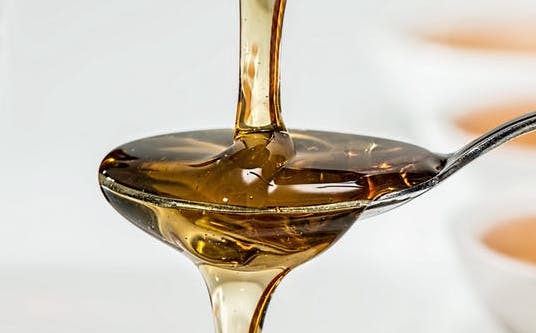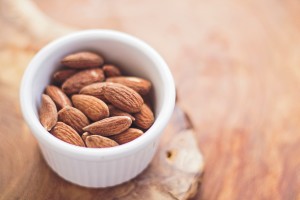This is the third and final post in our series, Coffee Health and Nutrition. Our first post, “Coffee Nutrition and Health: Black Coffee” covered, you guessed it, the nutrition of black coffee. Our second post, “Coffee Nutrition and Health: Milk Options & Nutrition,” discussed how the milk in your coffee can make or break your dietary goals. This final post will cover how you can sweeten and flavor your coffee in new ways to meet with what we’ve seen to be common nutrition goals.
Sugar, syrups, sauces. This is where we can find ourselves saying we’re drinking coffee when we’re basically sipping a hot, king-sized candy bar. We’re not going to mention any names, but some chains serve syruped-up “coffee drinks” that have 60 — even 70 — grams of sugar. That’s actually worse than a candy bar. So how can we sweeten/flavor coffee drinks without turning them into the nutritional equivalent of a Snickers?
Let’s start with some useful information:
A teaspoon of sugar has about 16 Calories and 4 grams of sugar.
The all natural syrups (vanilla, hazelnut etc.) we use at La Vita Dolce contain about 25 calories and 6 grams of sugar per pump. For a 12 oz. flavored drink, we typically use 1 pump of syrup (that this shouldn’t necessarily be expected at other cafes — some chains use 3 to 6 pumps per drink!).
Adding a flavored syrup to your drink (again, this is at La Vita Dolce where we use syrup in relatively small doses) is equivalent to adding about 1.5 teaspoon sugar.
So a 12 oz. vanilla latte at La Vita Dolce doesn’t have nearly the amount of sugar as a king-sized candy bar. But a large mocha with caramel and whip can be well into candy bar range.
Sugar & Spice: Making Them Nice(r)
Regardless of where you are on the black brew to candy bar coffee nutrition spectrum, if you’re adding any kind of sugary syrup to your drink, the suggestions below might help you slide toward the healthier end while still pleasing your tastebuds.
For the extreme sugar lovers, we suggest gradually cutting back on the syrups and sauces added to your drink. Move from 3 pumps of chocolate plus 3 pumps of caramel to 2 pumps of each. And then maybe cut out the caramel, and so on. Over time, you may begin to enjoy the flavor of the coffee itself as your tastebuds adjust.
There’s also the option of using artificial sweeteners. I’m not going to get into the health implications of these as research results are varied. But they’re certainly an option and certain syrups come in sugar-free varieties.
My top suggestion, though, is to try to stop using syrups and sauces in your coffee. Syrups and sauces are usually the culprit when a coffee drink becomes seriously unhealthy. I know that syrups are convenient as they’re easy to use — pump and done (or pump pump pump pump and done, as the case may be.). They allow for fewer steps in the drink-making process as they flavor and sweeten all in one.
My beef with syrups is, well, exactly that: they inextricably link flavor and sugar in preset proportions. To get more of a certain flavor, you also have to add more sugar. Syrups take away some of our control. I’m not into that.

But, fret not, there are ways to add flavor and sugar independent of one another, and thereby limit or eliminate the added sugar.

At La Vita Dolce, we try to use ingredients that are the natural source of a flavor. Think using ground cinnamon instead of cinnamon syrup. Even 100% juice is better than a fruit flavored syrup. When you add flavor through unsweetened sources, you can still choose to add sugar to sweeten your drink, but you can control the amount you’re adding. The resulting nutrition of your drink can improve substantially.
See the example below, which compares the nutrition of a traditional 12 oz. mocha to La Vita Dolce’s 12 oz. Cacao Almond Milk Mocha. By using different milks and sources of flavor and sweetener, we get very different nutritional outcomes.
| Traditional Mocha | Cacao Almond Milk Mocha | |
|---|---|---|
| Calories | 233 | 99 |
| Fat | 8.5g | 3g |
| Sat. Fat | 5g | 0.5g |
| Carbs | 30g | 15.5g |
| Sugar | 29g | 12g |
| Fiber | 1.5g | 1.5g |
| Protein | 9g | 1g |
| Cholesterol | 35mg | 0mg |
| Calcium | 30% | 46% |
| Vit A | 6% | 10% |
| Vit D | 25% | 25% |
The differences in the two drinks are:
- Both have 2 shots of espresso (no difference in coffee content)
- The traditional mocha is made with chocolate sauce while the Cacao Almond Milk Mocha is made with raw cacao and sugar.
- The traditional mocha is made with whole cow’s milk and the Cacao Almond Milk Mocha is made with soy milk. Just kidding. Yes, it’s made with unsweetened vanilla almond milk.

Both are chocolatey, delicious indulgences. But the Cacao Almond Milk Mocha has less than half the fat, calories, and sugar and almost no saturated fat. You can feel good about yourself and enjoy a decadent treat all at the same time.
You also have complete control over how much sugar is in your Cacao Almond Milk Mocha — the sugar isn’t already added to what’s giving the drink its chocolate flavor.
The nutrition information above results from our standard amounts of cacao and sugar. However, some customers ask us to use less sugar, which we can easily do without using less cacao (we have at least one customer who just gets cacao and no sugar). This makes it easy to get a mocha that’s less sweet, but still chocolatey. Or you can use a different sweetener with your cacao, such as honey or Stevia. And if you want it sweeter, you can even add more sugar while still being better off than you’d be with the traditional mocha.
It’s pretty exciting, at least to me, to have more control over both the specific elements of flavor added to your drink, and how good you feel about yourself while you’re drinking it. It makes the whole experience even more of a treat.
(I’d also like to point out that aside from having less sugar than processed chocolate, raw cacao has a lot more antioxidants and potential health benefits. So you’re not just reducing the bad stuff, you’re getting some really good stuff. Read about it in this entire post on our Cacao Almond Milk Mocha.)

Other examples of going to the source for flavor are using vanilla extract instead of vanilla syrup or using ground nutmeg, cinnamon, allspice and ginger instead of Pumpkin Spice syrup (we use these ground spices in our Spiced Pumpkin Latte). One of our specialty drinks has a splash of 100% apple juice. Our Thai Iced Latte is made with ground cardamom, sweetened condensed milk, and almond milk; for certain customers we reduce the sugar while maintaining the spiced flavor by using less sweetened condensed milk.
You get the idea. You can have a lot more healthy (and I’d say tasty) fun with flavors when you stop relying on syrups.
Final Comments
A few final comments, as this is the final post in our Coffee Concoctions For Your Dietary Goals series.
Brew Method
In the second post of this series, I briefly mentioned that there are a number of factors that can affect the taste of black coffee. These include bean origin, how the beans were processed, how they were roasted, and how they are brewed. Most of us aren’t growing, processing, or roasting at home, but we do brew at home.
Given the nature of this post I want to mention cold brewing and pour over brewing. If you like your coffee with milk and sugar but want to move toward drinking it black, these methods are good options.
Cold brewing typically produces coffee that tastes “sweeter.” La Vita Dolce’s cold-brewed nitrogen-infused Dolce Nitro naturally tastes sweeter and creamier than our drip brew; as a result I often tell customers who typically add sugar and milk to try it black first. (The creaminess is from the nitrogen we infuse into the cold brew).
Pour over coffee, compared to drip brewed or French press brewed coffee, is probably more palatable to those used to sweetened drinks, too. The pour over method brings out fruity and floral notes in the coffee and will produce brew that has less body than other methods.
Talk to Your Barista
If you come to La Vita Dolce, talk to us about your taste preferences and dietary goals! Our baristas love making customized drinks for customers, and know a whole slew of ways to adjust a drink to meet your needs.
We can switch up milks, change the proportion of milk to coffee, substitute spices and other flavored ingredients for syrups, replace sugar with other sweeteners, cut the caramel added in half and so on. For example, after talking with customers about what they like and their health goals, I’ve wound up making our Cacao Almond Milk Mocha many different ways. I’ve replaced half the sugar in the drink with Splenda, used skim instead of almond milk, cut out all sugar, increased the amount of espresso, and so on.
It makes our day when we know that your drink is a treat for you in every way. So go ahead, make our day.




 It’s a mocha (a chocolate latte) made with organic raw cacao, sugar, almond milk, and Streamline espresso. Compared to a typical mocha it has:
It’s a mocha (a chocolate latte) made with organic raw cacao, sugar, almond milk, and Streamline espresso. Compared to a typical mocha it has: ry of that rejuvenating elixir of life you drink every morning (and afternoon, and night for some of us) begins in Ethiopia, where coffee originated. And you can thank the goats.
ry of that rejuvenating elixir of life you drink every morning (and afternoon, and night for some of us) begins in Ethiopia, where coffee originated. And you can thank the goats.